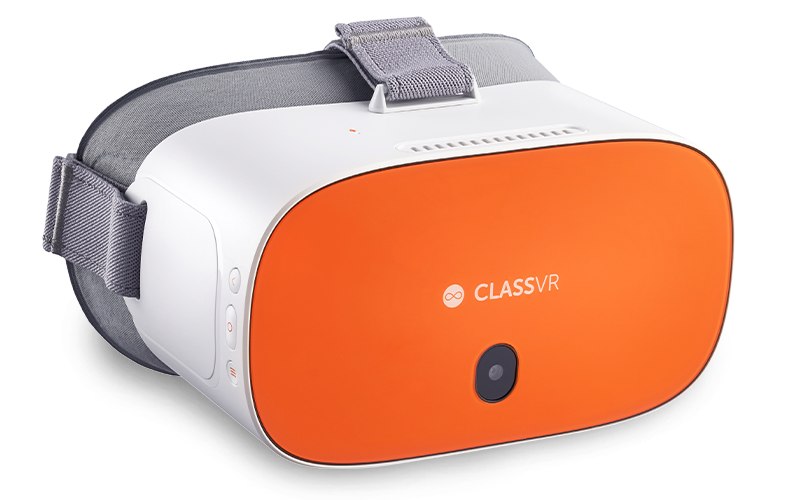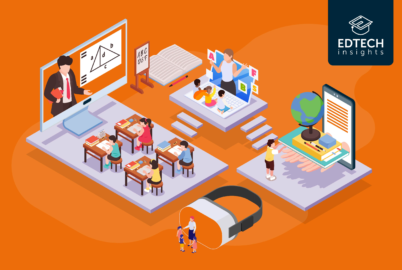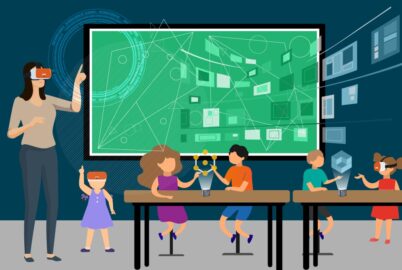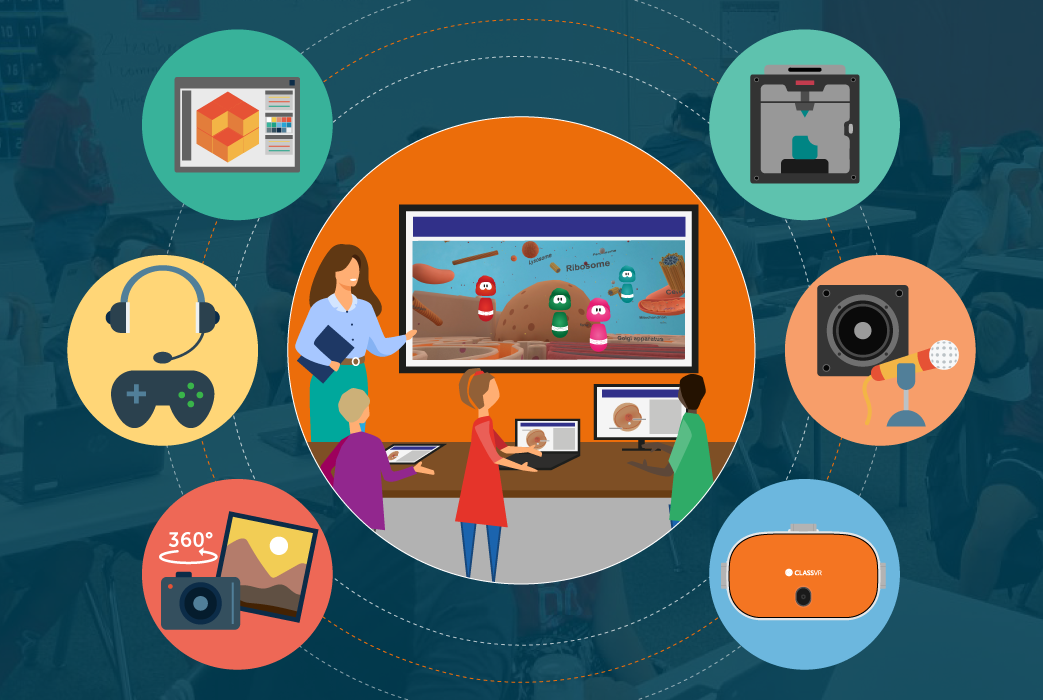
Technology in education is changing at a faster pace than ever before. The classroom doesn’t look like it did five years ago, let alone 30 years ago! With good reason too. Technology in education has a number of benefits for both teachers and students.
Want to stay in the know? Read on to discover everything you need to know about the use of technology in education...
Table of contents
A brief history of technology in education
Firstly, let’s explore how the use of technology in education has changed over time. There’s a vast array of equipment that can be classed as technology in education. From the overhead projectors and photocopiers, which made it easier to display and distribute learning materials, to mobile devices, which allow for new methods of instruction altogether.
However, it wasn’t until the 1980s that digital technology made its mark on education. This was the decade when computers went from an experimental technology to a mass-market consumer product. That shift was reflected in schools, many of which invested in a single computer for basic learning applications. The Education Reform Act in 1988 made some form of information and communication technology (ICT) compulsory for all pupils in state schools from 5 to 16.
In the 1990s, the advent of the World Wide Web gave a glimpse into what computers were capable of. Publicly available from 1993, it facilitated the use of search engines and email on a regular basis. By the end of the 1990s, most primary and secondary (K-12) schools had a computer lab equipped with enough machines for a full class to use.
This growth continued in the new millennium. In 2000, for example, the UK National Curriculum was updated with the recommendation that Information Communications Technology (ICT) should be embedded across the board. By 2009, 97% of US classrooms had at least one computer and 93% had internet access.
From the turn of the millennium, digital technology has been growing in prevalence within education – and it’s not just about computers. The early 2000s saw interactive whiteboards introduced. We’ve since seen a wide range of technology make its way into education – from portable and handheld devices in the 2010s to increasingly sophisticated software for learners and educators.
How important is the use of technology in education?
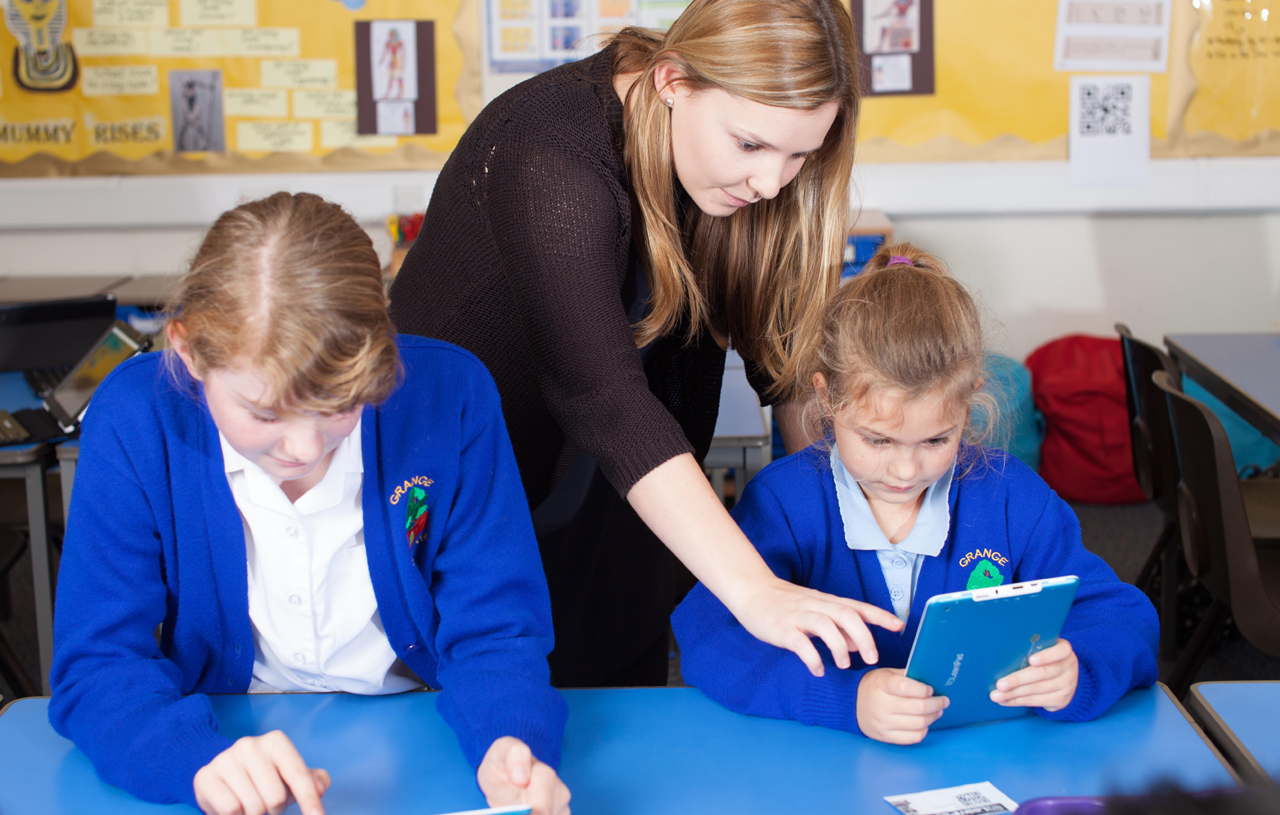
Millions of students in schools around the world use technology every day. From captivating imaginations to saving teachers’ time, modern technology is now part of the furniture in education – and it’s here to stay.
Looking back at the progress of technology in education, you can see that it’s only going in one direction. Up to and including the 1980s, there was no such thing as digital technology in education. In the 1990s and 2000s, IT was a single subject on the curriculum. Fast-forward through the 2010s, and it’s integral to practically everything schools teach.
As technology becomes more important to modern life, it will naturally become more important in education too. Put simply, it can’t be ignored. Educators that try to do so may miss out on the benefits we outline below.
What are the benefits of using technology in education?
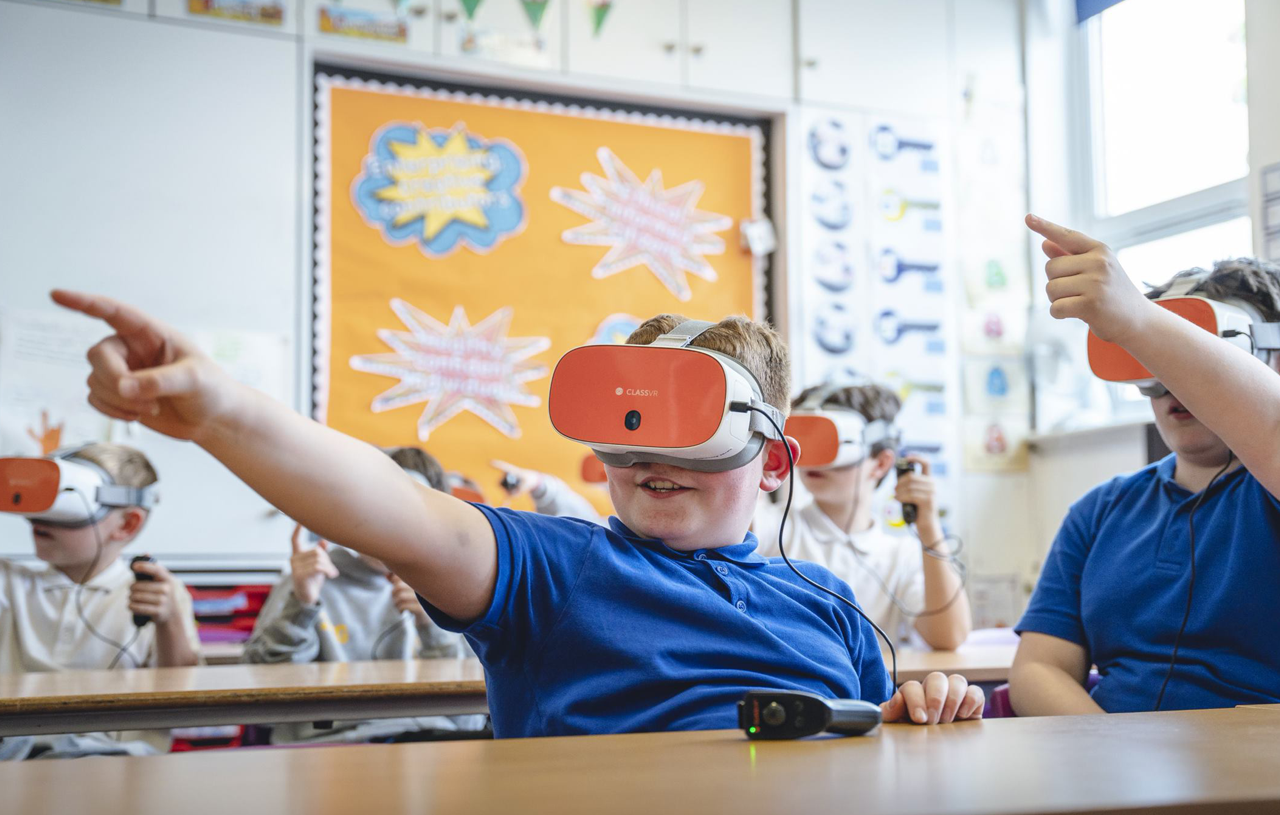
Technology can benefit education in many ways. From helping students learn in new and exciting ways, developing communication and teamworking skills or improving accessibility, teachers can use technology to adapt learning to each student’s needs. @Rocco_Avantis - Educational Specialist, Avantis Education
We’ve covered how important the use of technology in education is. But what are the actual benefits of using edtech in the classroom? Here are some of the advantages of educational technology for students and schools…
It creates engaging learning environments
Technology has a positive impact on student engagement, according to research. It can help educators create exciting, engaging and memorable lessons. Needless to say, higher engagement makes pupils more motivated and makes lessons more enjoyable for both students and teachers.Whether they’re using virtual reality headsets like ClassVR to explore the impossible, tablets to study the night sky, or coding platforms like CoSpaces to create virtual worlds – the use of technology in education can truly grab students’ attention! While traditional teaching methods are typically effective at engaging some students in a classroom, integrating edtech into their pedagogy can help educators engage every student in the class.
Technology in education prepares students for the future
Additionally, digital learning helps students improve those invaluable digital skills which are fundamental in modern life. While today’s learners are naturally proficient with technology like smart phones and computers, using them in an education setting throughout K-12 will familiarise them with more practical applications.As we’ve already covered, technology is a huge part of our lives, and it isn’t going anywhere. This means it’s key that children learn how to use technology while growing up, so they’re equipped throughout the rest of their lives! Students can learn some extremely important skills by using technology in education. With the rapid rate of technology innovation, simply being to adapt to new technologies is an invaluable skill in itself.
Improves interaction and communication
Technology can also improve communication and collaboration at schools. That could be collaboration amongst students or communication between students and teachers through an accessible or even anonymous platform.
Students can work together, create shared projects and engage with their peers through technology. What’s better, it doesn’t matter if they’re in the classroom together or working from home, which brings us onto…
Remote access
Gone are the days of groups of students crowding around an A4 worksheet, now students can communicate and interact with their peers from anywhere in the world!
Accessing learning materials remotely has multiple benefits for schools, teachers and pupils. Firstly, students don’t have to miss out on work if bad weather, illness or other circumstances prevent them from getting to school in person. Additionally, it’s easier to set homework with the benefits listed above – engaging, collaborative and tailored – which can be accessed remotely.
Fosters creativity and problem-solving skills
Classroom technology can help students set their imaginations free! When aligned with a teacher’s pedagogy, it offers endless opportunities to get creative while also practising problem-solving. Students can build anything, explore anywhere and so much more! For example, a study by Gallup showed that 85% of teachers who focus on creative learning and use technology in transformative ways see their students more engaged in independent problem-solving.
Saves teachers' time
If you ask a teacher what their most precious resource is, we'd wager that the majority would say time. There’s always so much that needs doing, and so little time to do it! But using technology in the classroom can give teachers some precious time back. It can be as simple as saving documents and lesson plans in Google Drive, taking attendance with nothing but a few clicks, or reporting on results. Technology can help educators focus their time on what matters, the teaching!
How is technology used in education?
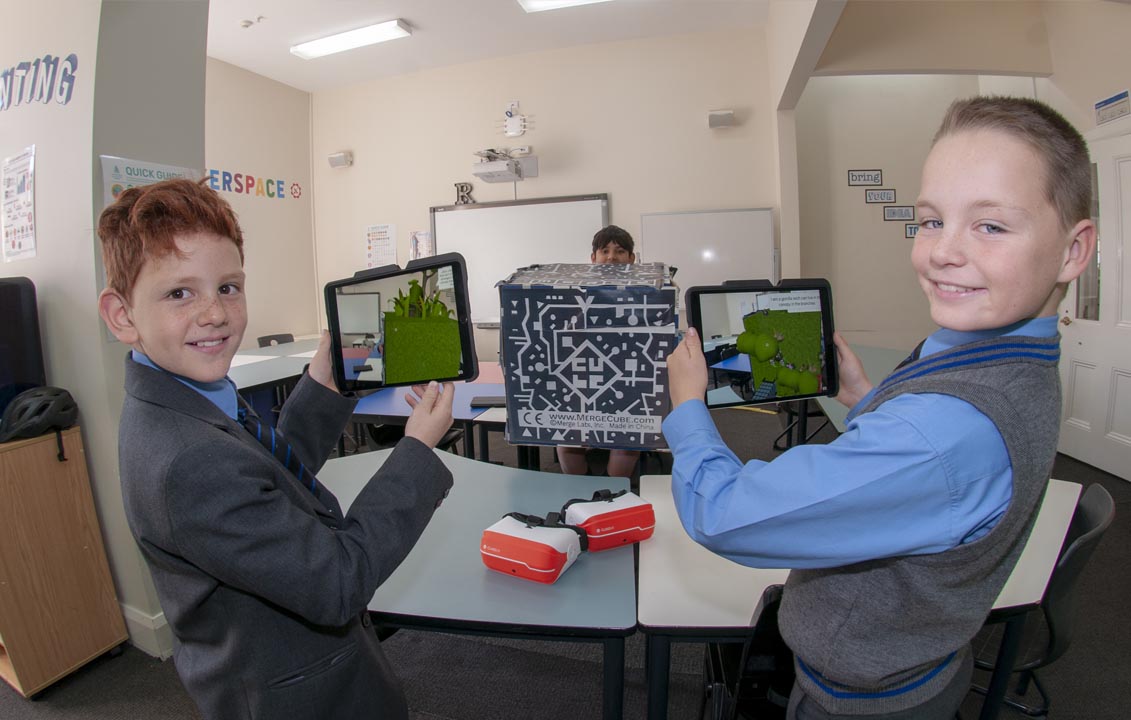
There are thousands (potentially even millions!) of technologies that educators can integrate into schools and smart classrooms. All of these tools have the potential to transform learning when correctly aligned to the pedagogy of the teacher. Here are some examples of the technology used in education:
Interactive whiteboards
Also known as a smart board, these large interactive displays have a variety of applications. They can be used as a simple touchscreen display where teachers can annotate, for example, or connected multiple devices to create interactive quizzes, polls and tasks.
VR & AR
One of the most exciting applications of technology in education is that of virtual reality (VR). Using VR headsets, teachers can immerse pupils in a range of virtual environments, such as historical re-enactments and science explorations. Rather than being given static information, pupils become part of the content they’re learning about.
Augmented reality (AR) is a similar concept, which makes education more engaging and immersive. While VR refers to a completely virtual environment created by technology, AR puts virtual elements into the real world.
Both augmented and virtual reality in education open a whole new world of opportunities for teachers and pupils. That applies to all age groups and ability levels. From as young as 4 years, VR can be used to transport children to the settings of books to make reading more immersive and spark their imaginations even more. At a later stage, the tools are still invaluable to engage students in important topics from the curriculum such as the Battle of Britain, and, in turn, spark more meaningful discussions.Virtual reality is also hugely effective tool for students with special educational needs. Used as a form of assistive technology, it has been found to engage children who struggle with intrinsic motivation, for example, as well as building up confidence ahead of new experiences with personalized 360 videos.
The metaverse
Since 2021, the metaverse has gone from one of Mark Zuckerberg’s eccentric ideas to a potentially useful concept for business and education. Strictly speaking, it’s based on VR, discussed above. However, the Metaverse goes beyond this by creating a virtual environment, in which all students can participate. The metaverse can provide a shared learning environment for students in class and those at home.
Mobile devices, tablets and laptops
Internet-enabled devices such as laptops and tablets are a great way for students to work in the classroom. They can be used to support independent research and fact-checking or create more engaging classroom activities like quizzes. Tablets can also encourage student feedback to help teachers provide the support they need.
Devices are at the very core of technology in education. To provide a level playing field for all students, schools must, where possible, provide reliable devices that have all the functionality required for the lessons being delivered.
Learning management systems
An LMS is a digital platform that stores educational materials. They became particularly important for teachers during the pandemic, allowing them to distribute materials to students remotely. However, they also provide a place where educators can manage the curriculum and course content more effectively.
Projectors & TV screens
While projectors have been around for some time, they’re continually advancing in terms of quality and functionality. As well as displaying multimedia content to engage classes, they can be used to facilitate collaboration and group projects. Similarly, TV screens facilitate multimedia content within the classroom, including video, music and text.
Microphones & speakers
Audio equipment is vital for larger teaching environments, such as sports halls and assembly theatres. It maintains student engagement and are particularly helpful for students with hearing impairments or those with English as a second language. Needless to say, microphones and speakers are also essentials for any music department!
3D printers
Primarily, 3D printing can be used to create models that allow a more hands-on approach to learning. That could be organs in biology as part of a STEM lab, maps in geography, or even 3D shapes for mathematics.
3D design tools
From art and architecture to design and engineering, 3D design has a vast array of applications in the modern world. As such, it’s a great thing for people to become familiar with from a young age, given that it’s relevant to so many career paths.
HD and 360-degree cameras
Cameras are a great tool for creative subjects in schools, but they can also be used as a way to improve teaching and learning. By recording lessons, schools can obtain valuable resources for staff training – not to mention providing a better experience for remote learners.
AI & robotics
Artificial intelligence has a variety of educational applications. It can save teachers time with marking, for example, especially in objective subjects like Maths. On the other hand, AI-based applications are becoming increasingly effective for language subjects.
Esports
Yes – really. Esports is a growing industry which offers real opportunities to students as they progress through education. Firstly, there are several parallels between education and esports, such as teamwork, communication and problem solving. By acknowledging these and understanding why children play games, schools can help students develop key skills that will benefit other areas of their education.
Remote learning
Technology was a lifeline for education during Covid-19 lockdowns, when it facilitated remote learning for students of all ages. Going forward, it can still play an important role. That could be for those who can’t make it to the classroom for whatever reason or just all pupils benefitting from more engaging homework assignments through purpose-built apps.
Blended learning
Blended learning is a practice that combines technologies like those above, with a face-to-face environment where teachers and students are physically present. Conventional classroom methods are also integrated, creating a ‘best of both worlds’ approach.
Potential challenges of digital learning
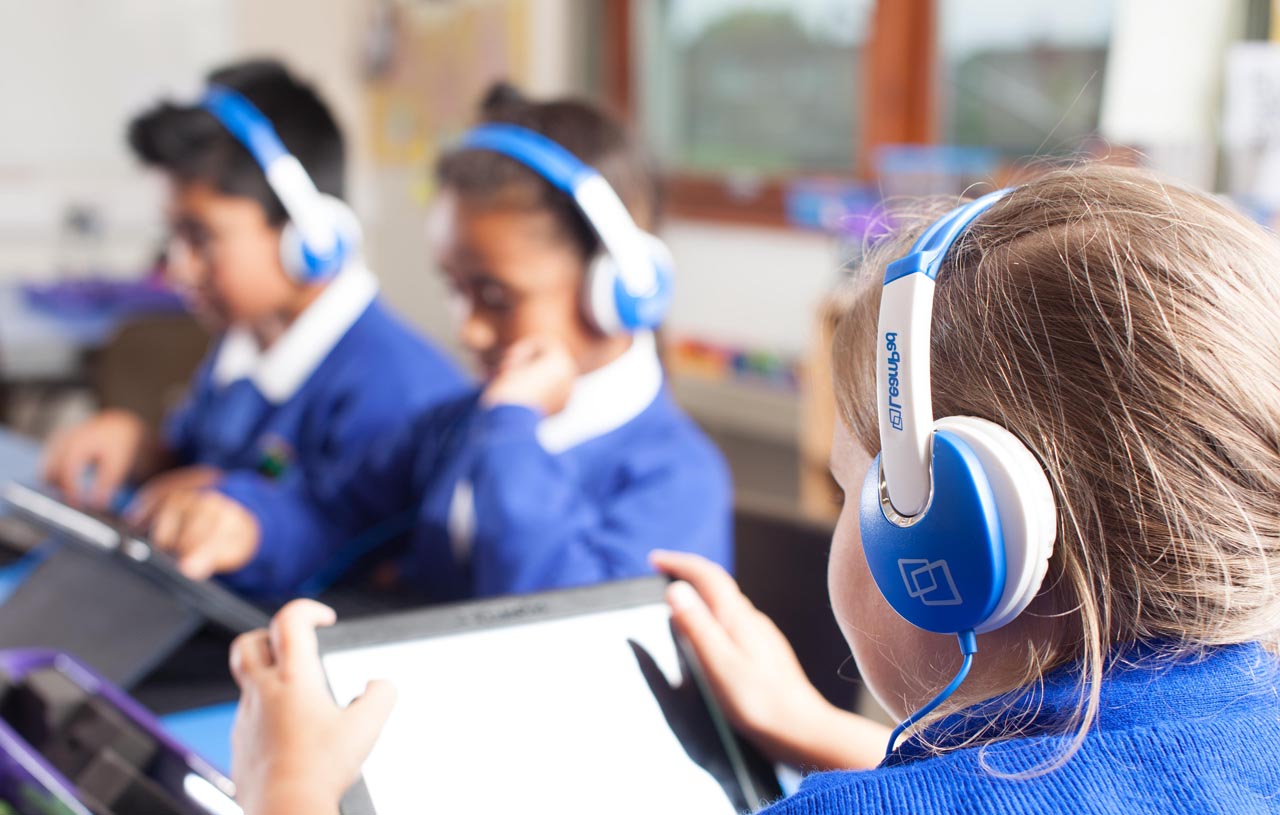
As with any new development, education technology (or ‘edtech’) isn’t without its challenges. Here are some of the potential hurdles which teachers and educational organisations need to overcome.
Disengagement
While engagement is seen as a common advantage of edtech, it can also have the opposite effect without the right planning and implementation. Howard, Ma & Yang found that teachers need to attend to students’ different capabilities with technology to avoid disengagement as a result of a lack of experience or confidence.
Teacher training
It’s not just students who can struggle with edtech. Teachers may also find it difficult to use certain technology or adapt their teaching methods to get the most out of it. In this case, professional development is a must, especially for experienced teachers who didn’t cover such technology in their initial teacher training.
Resources
Finally, there’s the issue of access. Not everyone has access to the same resources for digital learning. That applies to schools, who might not have the adequate funding for the technology they need. But it can also extend to students, who don’t have devices or reliable internet at home. For the latter, schools should try however they can to support students and provide the resources they need for e-learning if it’s a key part of the curriculum. In the UK, these two issues actually go hand in hand, with pupil premium funding provided for disadvantaged pupils. This funding can be used for things like VR technology to provide teaching aid and targeted academic support.
How to optimise the use of technology in education
“The use of technology in education is vastly important. Technology provides educators with opportunities to enhance teaching and learning, but the way it’s actually used in the classroom is the most important factor. The teacher's pedagogy is always key.” @Rocco_Avantis - Educational Specialist, Avantis Education
It’s not just the technology that’s important. The way educators use technology is just as crucial. You can have all the edtech you could possibly imagine in a classroom, but the educator leading the class is the most vital component. Pedagogy doesn’t come from the technology, it comes from the teacher.
To put it simply, every school and class is different. This means there’s not one hard and fast rule to maximising the use of technology in education. Instead, educators need to align their pedagogy and technology to the needs of the school, staff and students, whether it’s K-12, special educational needs or adult learning.For example, the use of technology in a charter school or rural, affluent area will be completely different to an inner-city secondary school based in a less affluent area. Similarly, the use of technology for high attaining students will be completely different to students with additional educational needs. It’s down to educators to look at their specific context, then decide what technology to use and how to use it to benefit the students in learning.
